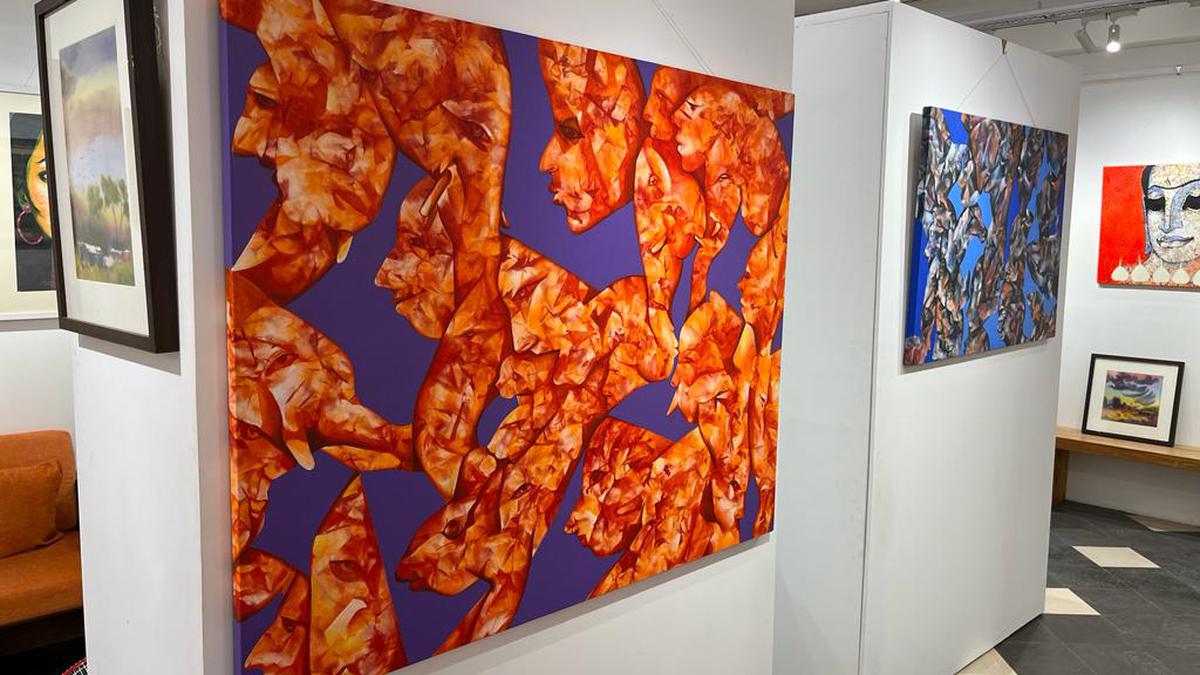
Combining art and literature
The Hindu
1000 Words Art Gallery and Aesthetes & Savants present Authors in Conversation with Madhulika Liddle and Aashisha Chakraborty at 1000 Words Art Gallery, New Delhi, on April 15, 5:30 PM.
Art and literature are similar in that both are the result of a creative process, are an expression of the creator’s thoughts and feelings, and have the potential to be practical communication tools. While Homer’s Odyssey or Shakespeare’s plays inspire paintings and sculptures, romantic poets like Coleridge and Keats inspire innumerable musical compositions and ballets, all enhancing the total experience of the art forms.
Authors in Conversation — conceptualised by Tejeesh Nippun Singh, founder of 1000 Words Art Gallery, in collaboration with Aesthetes & Savants — emphasises the link between literature and art to celebrate and promote all forms of art and artists, whether they’re working with words, colours, or other media.
1000 words Art Gallery has been envisaged as a cultural confluence of visual and performing arts, performing arts or literature, Aesthetes & Savants is a not-for-profit organisation promoting literary forms and arts.
The use of literature and art to promote a message is employed everywhere — directly, from commercial marketing to political propaganda and in subtle forms in graphic novels, television, cinema, etc. — so as to artistically convey an idea and also hammer home a meaningful message.
Madhulika Liddle (the first Indian to win the Commonwealth Broadcasting Association’s Short Story Competition) and Aashisha Chakraborty (PM-YUVA author and Write India winner) will come together with their mirrored perspective of art and literature in society. Surrounded by visual art forms like paintings and sculptures at the 1000 Words Art Gallery, the authors will showcase their writing to explore further and touch upon uncomfortable truths to show readers a side they may not have thought of.
Author of historical books like the Muzaffar Jang detective series (17th century Delhi) and the ongoing The Delhi Quartet (of which The Garden of Heaven was released in 2021 and focused on the Delhi Sultanate), Madhulika Liddle says, “Indian society today is so rent by schisms and so intent on distorting its narratives, both past and present, that it’s an uphill task for anyone who would like to see tolerance and the sort of syncretism that was once not so uncommon, to fit in with bigotry. To bring about social and cultural change, we must heed writer-philosopher George Santayana’s aphorism about history: “Those who cannot remember the past are condemned to repeat it.”
Being confronted with casual sexism, an abysmal sex ratio, language hurdles, hygiene complications and a laundry list of hurdles that almost every working woman goes through, Aashisha Chakraborty, author of Mis(s) Adventures of a Salesgirl, chose the novel format to write her story. “Choosing the medium of literature acknowledges the problem and embraces creative ways to portray workplace truths. Acceptance for most of us is the hardest thing to do. But once that is done, we move ahead and progress,” she says.





















 Run 3 Space | Play Space Running Game
Run 3 Space | Play Space Running Game Traffic Jam 3D | Online Racing Game
Traffic Jam 3D | Online Racing Game Duck Hunt | Play Old Classic Game
Duck Hunt | Play Old Classic Game











